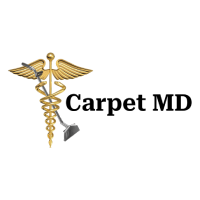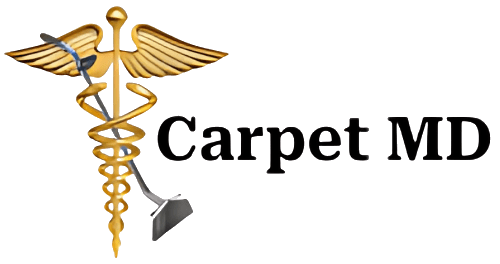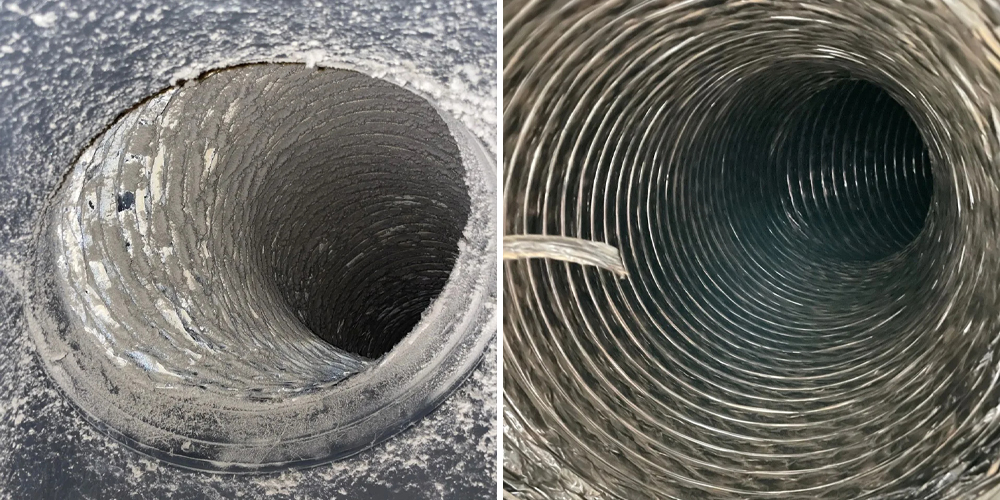Did you know that up to 40% of residential energy loss stems from clogged HVAC ducts loaded with dust and debris? Discovering trusted local air duct cleaning companies can restore airflow, enhance indoor air quality, and reduce energy bills. This guide explains what air duct cleaning involves, how to identify certified providers, the professional process, cost factors, dryer vent services, and health benefits. By the end, readers will know how to choose reliable experts—like Carpet MD’s Professional Air Duct Cleaning Services—to ensure cleaner, healthier air at home and work.
Energy Loss from Clogged Ducts
Studies indicate that a significant portion of energy loss in homes can be attributed to issues with HVAC systems, including clogged air ducts. This can lead to decreased efficiency and higher energy bills. Regular maintenance, including duct cleaning, can help mitigate these losses.
U.S. Department of Energy
This research supports the article’s claim about the impact of clogged ducts on energy efficiency.
Air Duct Cleaning: Key Benefits for Your Home and Business
Air duct cleaning is the systematic removal of dust, mold, and contaminants from HVAC ductwork, which prevents airborne pollutants from recirculating and protects occupant health. This process restores optimal airflow, reduces strain on heating and cooling equipment, and minimizes allergy triggers. For example, homeowners experiencing persistent sneezing reported a 75% drop in indoor dust levels after professional duct cleaning.
Beyond healthier air, routine cleaning extends system lifespan and lowers energy costs by up to 21%. Understanding core benefits leads naturally to how cleaning directly improves indoor air quality.
How Does Air Duct Cleaning Improve Indoor Air Quality?
Air duct cleaning improves indoor air quality by removing dust, mold, and allergens from HVAC ductwork, which prevents airborne contaminants from circulating and supports respiratory health.
- Enhanced airflow carries fewer irritants to living spaces.
- Mold spore reduction lowers asthma and allergy flare-ups.
- Elimination of pet dander and pollen creates a safer environment for sensitive individuals.
Health Benefits of Air Duct Cleaning
Air duct cleaning can improve indoor air quality by removing allergens and pollutants, which can lead to better respiratory health. Removing contaminants from the air ducts can reduce the presence of allergens and irritants in the home environment.
Environmental Protection Agency (EPA)
This citation supports the article’s claims about the health benefits of air duct cleaning.
Consistent cleaning creates a foundation for improved comfort and health, which ties into identifying specific contaminants next.
What Are Common Contaminants Found in Air Ducts?
Air ducts often harbor multiple pollutants that degrade air quality and system efficiency. The table below categorizes the most frequent contaminants, their sources, and health impacts.
| Entity | Attribute | Value |
|---|---|---|
| Dust and Debris | Source | Household particles, insulation fibers |
| Mold and Mildew | Growth Condition | Moisture accumulation in duct seams |
| Pet Dander | Allergenic Potential | Protein fragments triggering immune response |
| Pollen | Seasonal Peak | Spring and fall pollen seasons |
| Insect Infestation | Structural Impact | Nests and droppings obstruct airflow |
Contaminant removal restores duct integrity and prepares HVAC systems for peak performance, which paves the way to explore efficiency gains.
How Does Air Duct Cleaning Enhance HVAC System Efficiency?
Air duct cleaning enhances HVAC system efficiency by clearing blockages that restrict airflow, which reduces energy consumption and extends system lifespan.
- Improved airflow decreases blower motor workload.
- Reduced temperature differentials lower heating and cooling cycle frequency.
- Cleaner heat exchangers and coils optimize thermal transfer.
Optimized systems yield smoother operation and lower utility bills, setting the stage for selecting certified local experts.
How to Find Trusted Local Air Duct Cleaning Companies in Forest Grove?
Finding trusted local air duct cleaning companies in Forest Grove begins by verifying certifications, reading customer reviews, and comparing service offerings within your area. Local expertise ensures faster response times and area-specific knowledge of climate-driven contaminants. Carpet MD extends its reputation in carpet care to comprehensive air duct cleaning, backed by trained technicians and customer-first policies.
What Certifications and Qualifications Should You Look For?
Seek providers with industry-recognized credentials to guarantee quality outcomes.
- EPA or state licensing ensures compliance with environmental regulations.
- Ongoing technician training reflects up-to-date best practices.
These qualifications directly correlate with thorough, safe service delivery, leading into how to vet company reputation.
How to Verify Company Reputation and Customer Reviews?
Evaluating provider reliability involves checking multiple feedback sources.
- Review star ratings and written testimonials on Google Business Profile and Yelp.
- Confirm verifiable project photos detailing before-and-after duct conditions.
- Ask for local referrals to gauge real-world performance.
Reliable reputation checks reduce hiring risk and transition naturally to benefits of local specialists.
Why Choose Local Air Duct Cleaning Experts Over National Chains?
Local air duct cleaning experts offer tailored solutions based on regional environmental factors and building codes, which yields faster scheduling, personalized service, and community accountability. Their focus on area-specific issues—such as coastal humidity or inland dust—ensures targeted cleaning. This hometown advantage often delivers superior responsiveness compared to national chains.
Building on local trust, it’s essential to understand the professional cleaning methodology.
What Does the Professional Air Duct Cleaning Process Involve?
Professional air duct cleaning involves pre-inspection, source removal, and post-inspection verification, which assures complete contaminant eradication and system balance. Technicians begin with a detailed assessment of duct accessibility and condition, followed by mechanical agitation and HEPA vacuum extraction. A final walkthrough confirms cleanliness and airflow restoration.
Grasping the process details clarifies customer expectations and connects to specific procedural steps.
What Are the Key Steps in Residential and Commercial Air Duct Cleaning?
Residential and commercial systems follow a structured five-step workflow:
- Inspection of duct layout and contamination levels.
- Containment setup to prevent dust migration.
- Mechanical agitation using rotary brushes or air whips.
- HEPA vacuum extraction under negative pressure.
- Final inspection to confirm debris removal.
Adhering to these steps ensures thorough cleaning and guides clients through anticipated service stages.
Which Tools and Techniques Are Used for Thorough Duct Cleaning?
Effective duct cleaning employs specialized equipment and methods to dislodge and capture contaminants.
- HEPA-filtered vacuum units maintain negative pressure and capture 99.97% of particles.
- Rotary brush systems agitate built-up dust along duct walls.
- Compressed air whips dislodge debris in hard-to-reach branches.
Combining these techniques secures deep cleaning results, which informs realistic time expectations.
How Long Does Air Duct Cleaning Typically Take?
Typical residential duct cleaning requires 2–4 hours, while commercial projects can span 4–8 hours depending on system complexity and square footage.
| Entity | Attribute | Value |
|---|---|---|
| Residential | Average Duration | 2–4 hours |
| Commercial | Average Duration | 4–8 hours |
Timeframes account for inspection, equipment setup, cleaning, and verification, preparing clients for scheduling considerations.
How Do Service Type and Property Size Influence Cost?
Service complexity and property scale directly impact pricing because larger duct networks and commercial systems require more labor, equipment, and time. Additional factors:
- Duct accessibility challenges increase labor hours.
- High-rise or multi-zone systems may need specialized lifts or containment.
- Historic or insulated ducts often require careful handling to prevent damage.
These considerations explain cost variances and lead into optional add-on services.
What Are the Benefits of Dryer Vent Cleaning and Why Is It Essential?
Dryer vent cleaning prevents fire hazards by removing lint buildup from dryer exhaust ducts, which safeguards property and improves dryer performance. Clean vents also shorten drying times, lower energy usage, and reduce maintenance calls over time.
Recognizing these advantages sets the stage for understanding safety mechanisms and maintenance schedules.
How Does Dryer Vent Cleaning Prevent Fire Hazards?
Dryer vent cleaning prevents fire hazards by eliminating flammable lint accumulations that can ignite from dryer heat, which drastically reduces residential fire incidents.
- Removes lint at the dryer outlet and ductwork.
- Clears blockages that trap heat behind the appliance.
- Ensures safe exhaust of hot air outside the home.
Safe vent operation enhances household security and transitions into maintenance frequency recommendations.
How Often Should Dryer Exhaust Vents Be Cleaned?
Manufacturers and safety experts recommend cleaning dryer exhaust vents at least once a year, or more frequently for households with large laundry loads. Regular maintenance prevents lint build-up, extends dryer life, and maintains energy efficiency.
Routine schedules anchor user awareness of cleaning indicators next.
What Are Signs That Your Dryer Vent Needs Cleaning?
Visible and performance-based signs indicate vent blockages and warrant prompt cleaning:
- Clothes taking longer than one cycle to dry.
- Burning odor near the dryer.
- Excessive lint accumulating outside the lint trap.
- Roof or wall vent flappers not opening fully.
Recognizing these triggers helps homeowners act before safety and efficiency are compromised, leading to certification considerations for duct professionals.
How Can Clean Air Ducts Improve Your Health and Home Comfort?
Clean air ducts reduce allergens, mold spores, and dust particles in HVAC systems, which enhances respiratory health and creates more consistent home temperatures. Properly maintained ducts also prevent uneven airflow and hot or cold spots, promoting year-round comfort and energy savings.
This overview leads into specific health and comfort improvements explored below.
How Does Air Duct Cleaning Reduce Allergens and Asthma Triggers?
Air duct cleaning reduces allergens and asthma triggers by eliminating dust mites, pollen, and pet dander from HVAC passages, which lowers airborne allergen concentrations and supports easier breathing.
- Extracts microscopic irritants from duct surfaces.
- Inhibits mold spore circulation during humid months.
- Prevents re-contamination by sealing minor duct leaks.
Allergen control directly supports safer indoor environments and sets up mold-and-dust reduction.
What Role Does Duct Cleaning Play in Reducing Mold and Dust?
Duct cleaning controls mold and dust by removing nutrient sources in duct linings and maintaining dry, sealed systems, which discourages microbial growth and dust accumulation. Regular cleaning interrupts mold colonization cycles and ensures duct interiors remain hygienic.
Effective mold and dust control then transitions to energy bill and comfort impacts.
How Does Improved Airflow Affect Home Temperature and Energy Bills?
Improved airflow stabilizes home temperature by distributing conditioned air more evenly, which reduces HVAC run times and lowers energy bills by up to 15%. Balanced ducts eliminate hot and cold spots, delivering consistent comfort and avoiding overwork of heating and cooling units.
Conclusion
Clean air duct maintenance protects occupant health, enhances system efficiency, and extends equipment lifespan. By choosing certified local experts—such as Carpet MD offering comprehensive air duct and dryer vent services—homeowners can secure cleaner, healthier air and measurable energy savings. Regular inspections, professional cleaning protocols, and certified technicians ensure every duct system performs optimally. Contact Carpet MD today for a free estimate and breathe easier tomorrow.







